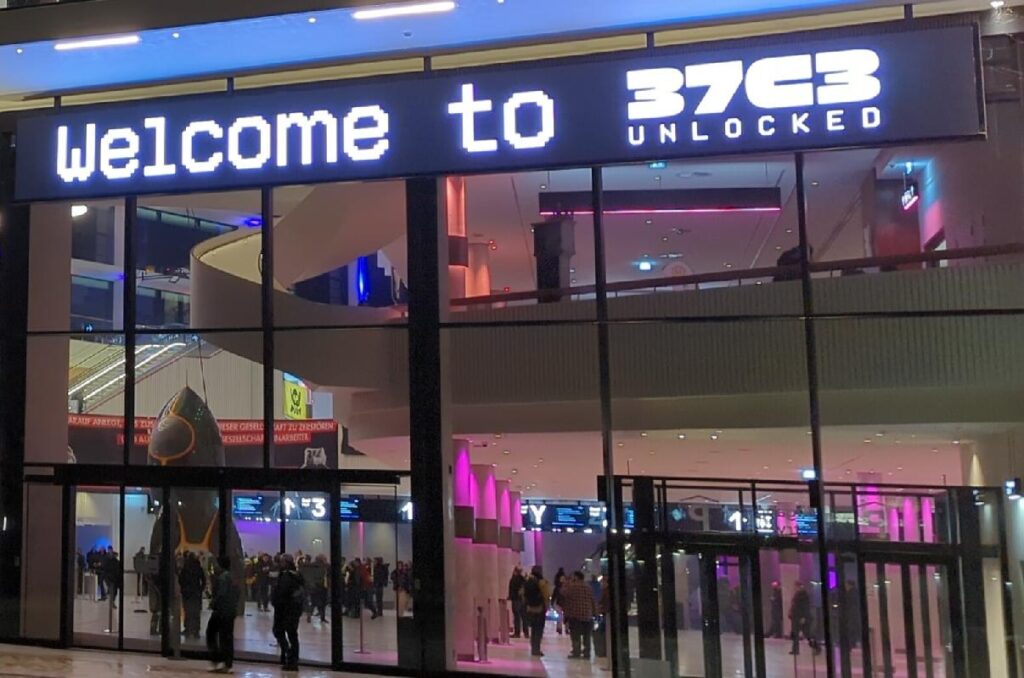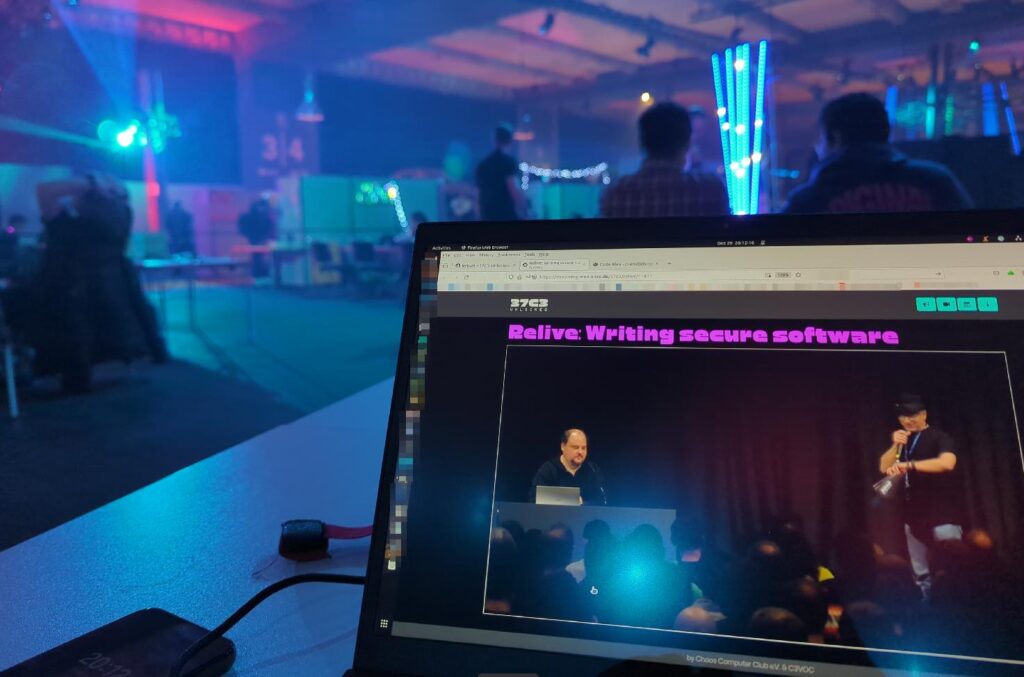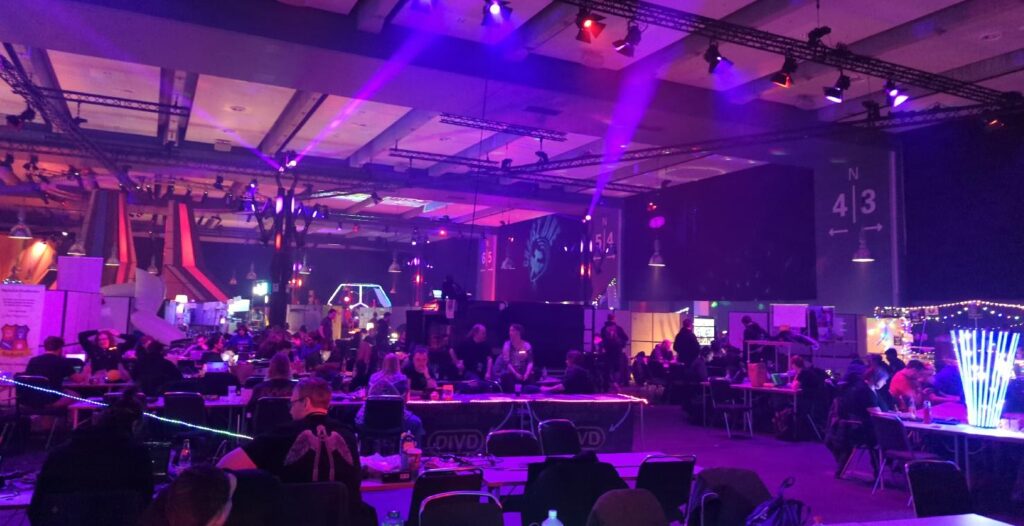
Those of you who have been to ‘Congress‘ before know it’s a special event for anyone even remotely nerdy. It always takes place between Christmas and New Year’s Eve and I was lucky enough to get a ticket. It seems they still remembered I gave a talk there about 5G last time around. After not having taken place for a number of ‘Covid’ years and after moving back from Leipzig and 17.000 participants to the significantly smaller Congress Center Hamburg, I was not sure how things would work out and whether I would like it. So I jumped in to find out.

As always, I arrived on day -1, i.e. on the 26th of December, to get a ‘lay of the land’. The Congress Center Hamburg has been renovated since Congress was there last time, so I expected things to be much different. And indeed they were, everything was a lot brighter, shinier and newer than before. Perhaps a bit too shiny and too new, as people were requested not to use tape to fix information and advertisement leaflets to the seemingly freshly painted walls. Also, the assemblies on the upper floors where, at least for Congress standards, brightly lit and there was very little colored light and few art installations. Much to my shame, I took me until day 3 to actually find the two huge assembly halls on the ground floor which were properly dark and nerdy, with lots of light and art installations and desks to sit at. In total, I went to 3 or 4 talks per day, attending some of them in their proper meeting rooms, while watching others at the desk where I was hacking away on my ‘Congress projects’. A lot of excellent talks and I fully recommend you to have a look at the recordings.

Speaking of ‘projects. Talks are just one side of Congress. The more important reason to go to Congress for me is to get inspired by others attending, and work on a number of projects for a while I would otherwise not get around to. One thing I had on my list for quite a while now was to reorganize the containers in my cloud infrastructure to only expose those containers to the reverse web proxy that actually receive incoming internet traffic. All other containers should only talk to other containers inside their own domain. More on this in a separate post.
Another project on my list was to have a closer look at where and how Linux ‘snap’ apps store their user data to better understand the difference between a native installation and its containerized counterpart. This will help me when the day comes when I have to upgrade some family computers to the next Ubuntu version which must have, by definition, zero down time. So I can prepare long in advance, create alternative system installations with the new Ubuntu version and keep them current with data of Firefox, Thunderbird and Libreoffice, which will be shipped as snap containers in the next Ubuntu release. Yes, one needs a bit of time for such thoughts, and Congress is just the right time and place for this to get inspired.

After these smaller things, I set out to work on my actual ‘Congress’ goal: If you are a regular reader of this blog, you remember perhaps that flying in the virtual world ‘as real as it gets’ has become another fascinating hobby of mine. ‘As real as it gets’ means that I want to fly with ‘real’ virtual air traffic control, i.e. there should be airport tower controllers as well as area controllers along my route. There are great tools on the web that graphically show at which locations in the virtual world air traffic control is currently available and how long those controllers have already been online. By visually checking those maps, it’s possible to find routes with a very high likelihood of air traffic control still being online by the time I fly into their control zones. But doing this manually is a bit tiresome. The solution: Let’s automate this! The big virtual air traffic control networks (IVAO and VATSIM) offer an API to query the controller status of their virtual worlds in real time via a URI, and return data in JSON format. To this data, I can then apply rules when and which controllers have to be online to declare a ‘route’ as flyable. A bit of extra code and the output ends up on a web page and as an instant notification on my smartphone. I mixed all of this with a refresher course on Python, a ChatGPT helper to get started with the basic code, and put everything in git and docker containers for easy deployment behind a reverse web proxy. The icing on the cake was a new a domain name and eMail address, and ready was the perfect project for Congress. Not only because I now have a cool tool that will greatly help me, but it helped me to stay current and experiment with the latest developments in all the areas this small project has touched. Which in turn, will help me in my daily business to come up with solutions to future challenges and better understand how systems I work with today are structured.
So this was my Congress experience in 2023 and I’m really glad I came, despite not being sure how this would work out. A great ending of the old year and a wonderful beginning of 2024!